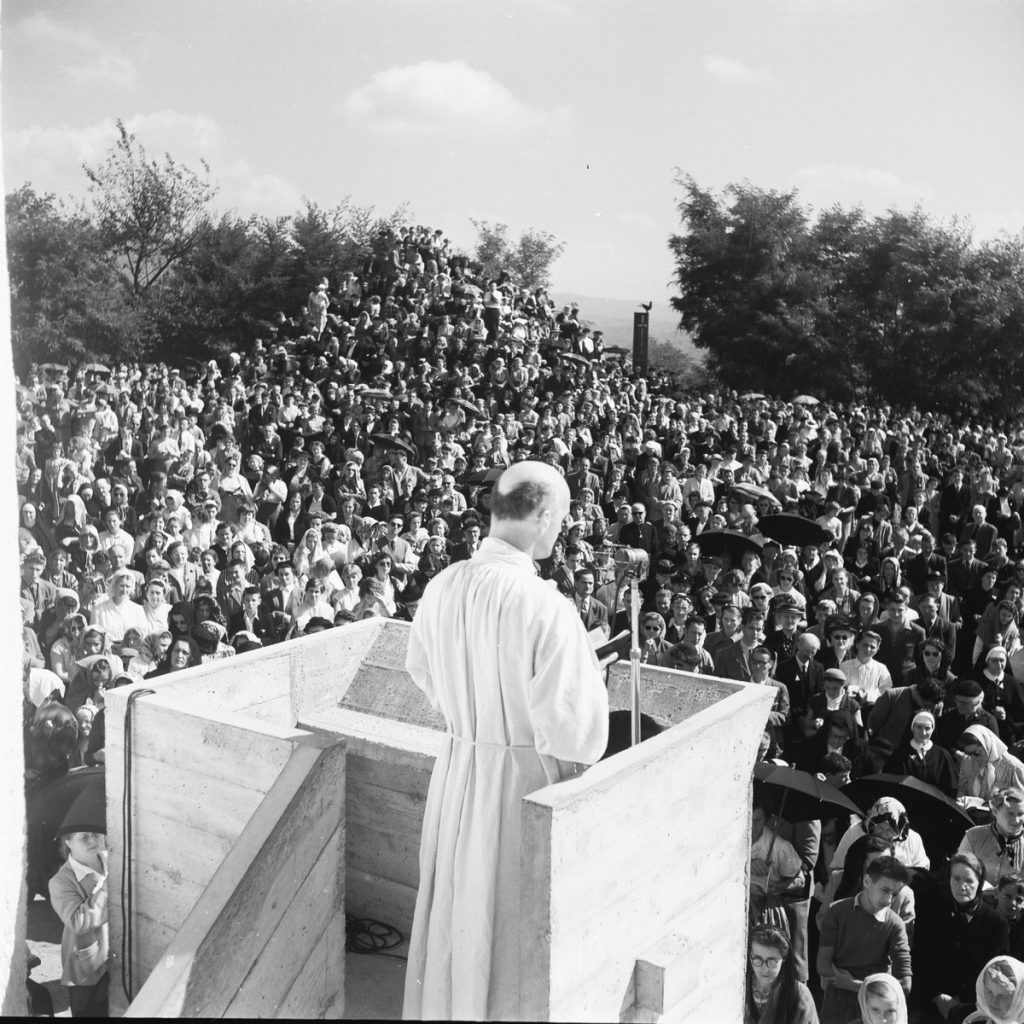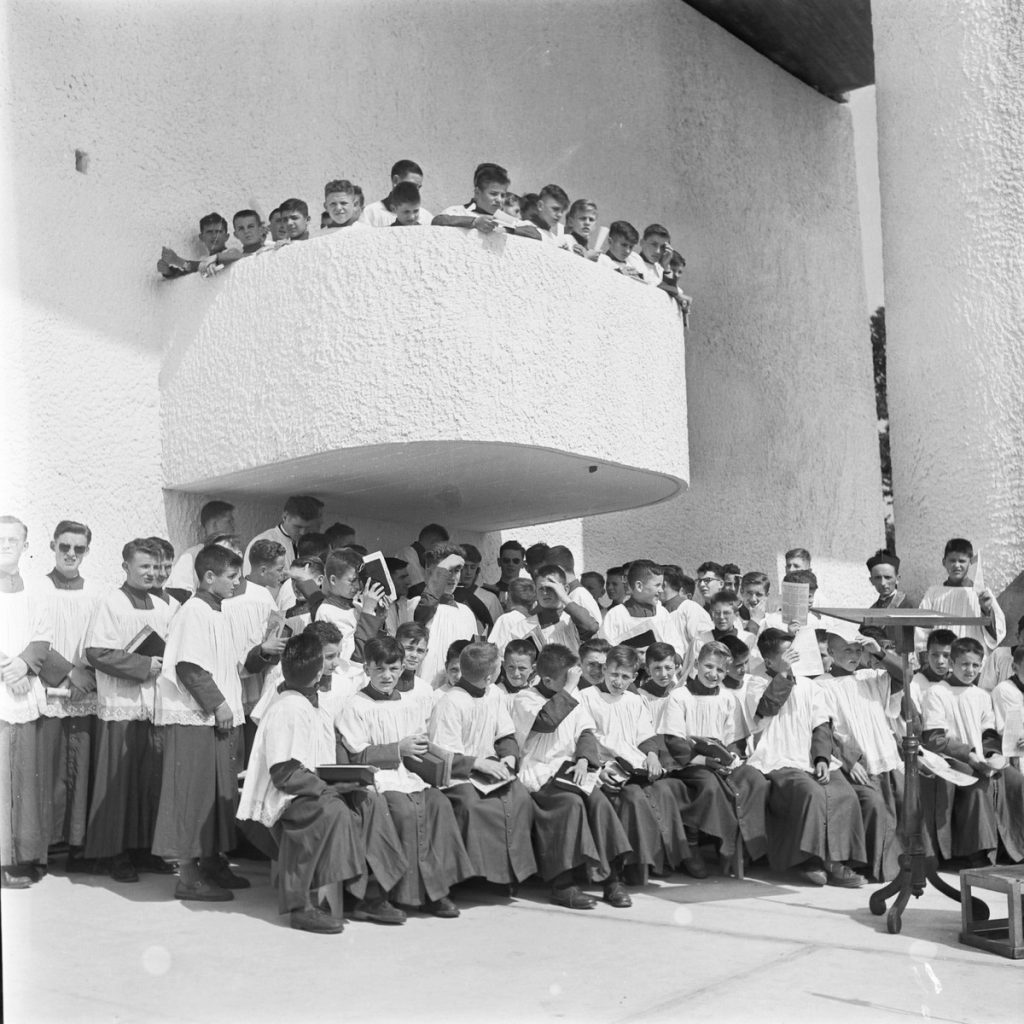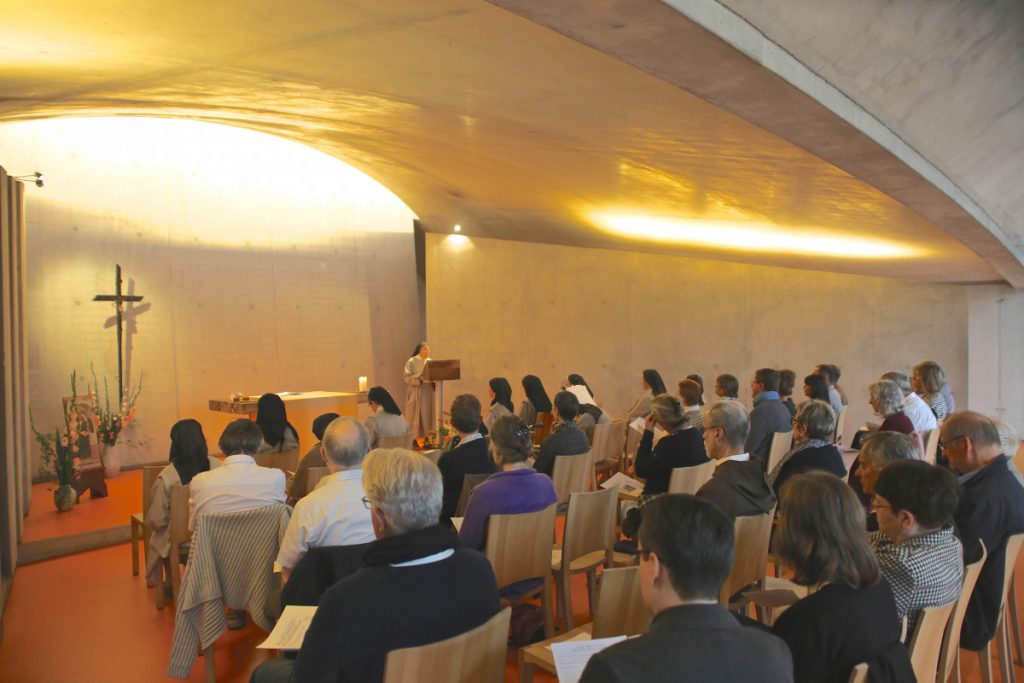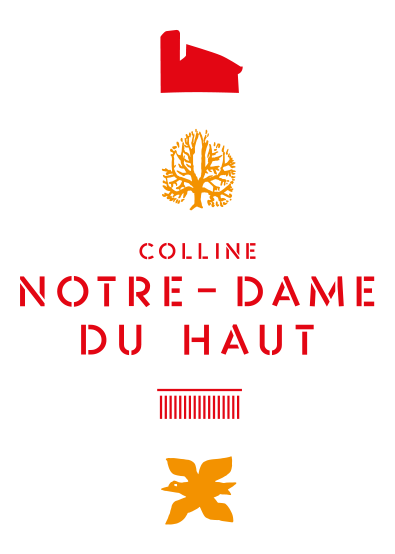- Discovering the Hill
- No content found
- Plan your visit
- No content found
- Agenda
- Shop
The history of the hill is not known before the 9th century AD. What was there before this period? The hill stands at the entrance of the gap of Belfort which is a natural way to go from the Saône plain to Alsace. It may have been used as a strategic place. A military Roman camp might have settled there.
The privileged situation of the site, at the top of the hill, encouraged the settlement of a place of worship, probably at a time when Christianism was taking root in the region at the end of the 6th century A.D.
A pilgrimage was mentioned as early as the 11th century. Pilgrims have come from the whole region ever since to pray to the Virgin Mary on the 8th September, Nativity of Mary. Unhappily, we have no ancient sketch of the Chapel dating from this period.
It is only during the 20th century that the second pilgrimage has been established, on the 15th August, for the Assumption.


The Chapel of Notre-Dame du Haut is not a shell emptied of prayers.
From 1958 on, a Chaplain has lived permanently in the caretaker’s house, which became the Chaplain’s house.
This Chaplain was René Bolle-Reddat, who was born in 1920 and died in 2000. He was a strong character, and he left his mark on the site. He protected the Chapel for forty years against vandalism as well as against the bad consequences of mass tourism.
The public flocked to the Chapel as soon as it was inaugurated. Father Bolle-Reddat became a guide, an interpreter. He celebrated mass and made the Hill a center of faith.
His death in 2000 left the site at a loss. A new Chaplain was appointed for Sundays, but what about the Chapel? Was it going to become a museum of modern art? What would become of the ancient and fervent worship to the Virgin Mary?
The archbishop wished that a religious community could settle near the Chapel to keep the spirit of the place.
In order to answer this request, the “Fraternités monastiques de Jérusalem” settled on the site for three summers between 2002 and 2004.
The community lived in the Pilgrim’s Shelter, which unhappily is ill-fitted for long stays.
The owners of the site decided then to have a permanent religious presence on the hill again.
A religious community could welcome the pilgrims and the faithful all the year round and could give the Chapel back to its first function, which is to be a house for prayer. But the “Fraternités de Jérusalem » left the site.
In 2005, the association which owns the site contacted the community of Saint-Clare’s nuns in Besançon as they were looking for a new place to settle.
The nuns quickly accepted this offer.
On the Hill, they could find a place where to contemplate, to live and to welcome people according to their spiritual needs. The monastery was built by the Italian architect Renzo Piano and his studio the Renzo Piano Building Workshop.
Today, the. Chapel by Le Corbusier has found its spiritual breath thanks to the Chaplain and the nuns. Every day, the Chapel is alive with the sound of individual and collective prayer.
Every Sunday between Easter and All Saints ‘Day, the mass is celebrated in the Chapel of Notre-Dame du Haut, and in the oratory of the monastery for the rest of the year, except for Christmas night.


13 rue de la Chapelle
F-70250 Ronchamp
+33 (0)3 84 20 65 13
Contact
Until Friday 18 April 2025: 10am to 5pm
From Saturday 19 April 2025: 10am to 6pm
From Monday 12 October 2025: 10am to 5pm
Last admission: 30 minutes before closing time. Closed on 25 December and 1 January
For journalists
Connect
Educational resources
To go further
+33 (0)3 84 20 73 26
Contact
Réalisation DN Consultants